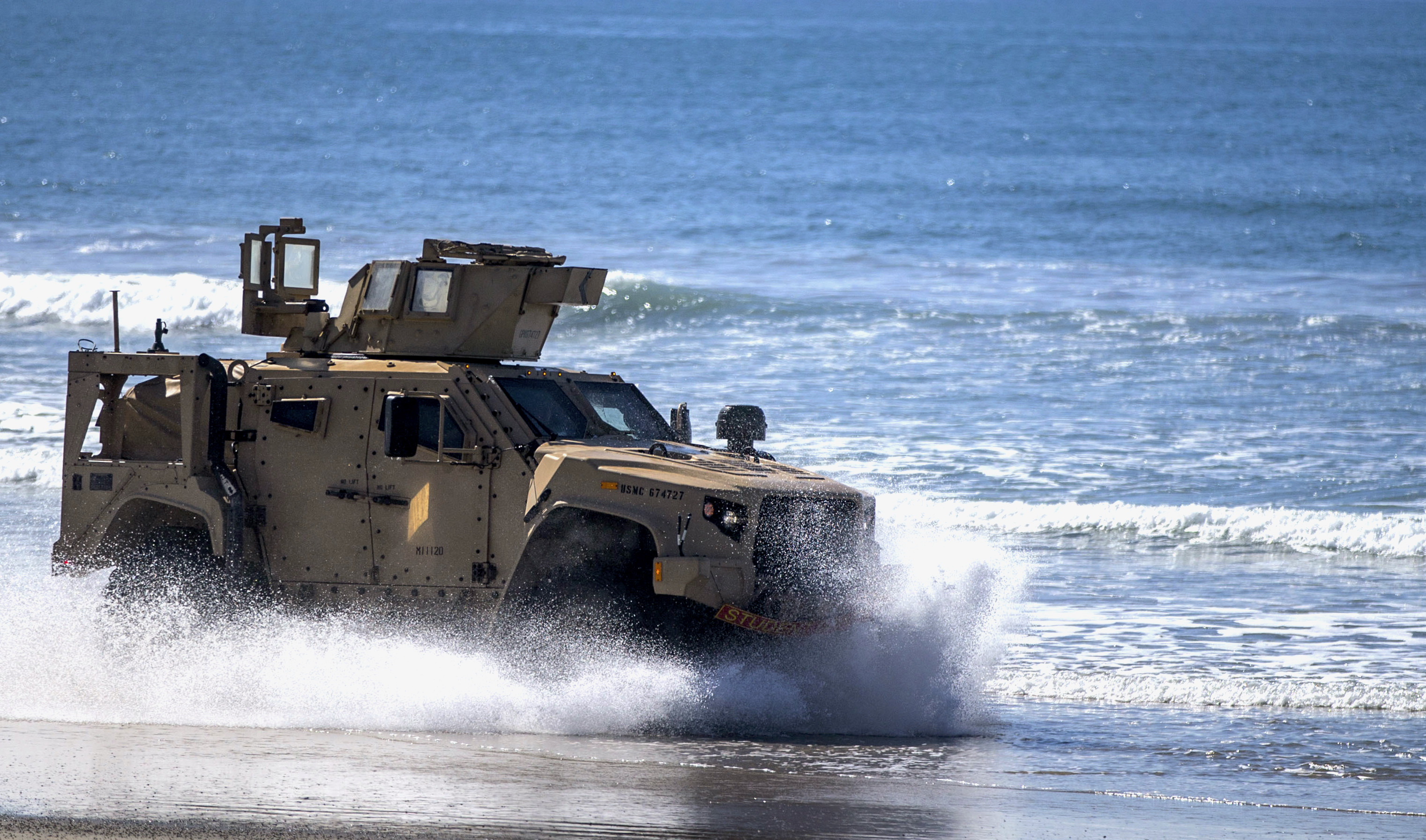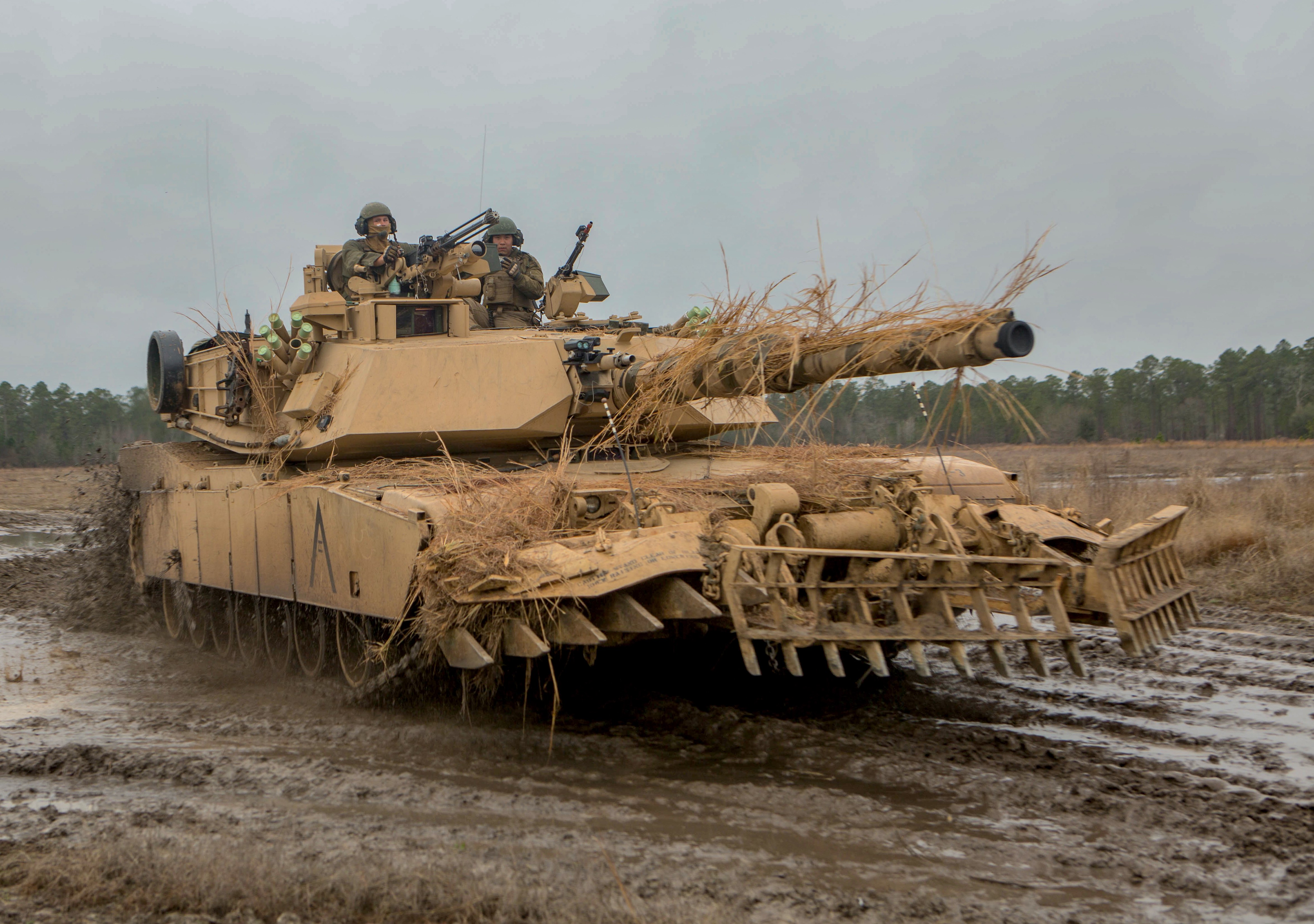More agile in a peer fight - against a threat that has tanks and significant artillery. Something there doesn't make sense. Especially as missiles / rockets are easier to intercept, harder to resupply and larger than 155 mm shells. Plus all the drones being used by ground forces are either very limited or easy to intercept, so what does that grant?
No bridging units or AVLB (because of no armour)? Hope there are no obstacles just behind the beachhead. Obviously the USN CB's are there. but they'll be slower than an AVLB with tank support.
F-35B from 24 jets / Sqn to 10? Ha! Sucks to be those maintainers. Watch availability plummet, and the F-35C's are going to be too busy fighting to defence the fleet.
So this is a light infantry force with limited fire support. And this is to fight a peer? Hmmmm.....
But it gets better. A light infantry force with less air lift! That's hilarious. 'Agile"....
Still not really convinced that land-based AShM are feasible either. I think the targeting problem is under-estimated by most.
At a higher level, I'd also beg the question - support USN operations? In modern times, the USMC has rarely (never?) done that. Guadalcanal, Iwo Jima, Okinawa - that was all to support air operations. Olympic, Inchon - that was to support land operations. Plus, sea control isn't really possible by land forces, it's too amorphous and just plain big.
I'd argue the plan isn't to go head to head against tanks and artillery in a combined-arms situation. Looking at current territory likely to be contested over in Northeast Asia, you find the Ryukyu Islands (including the Senkaku Islands and Okinawa) and the Kuril Islands. You also have the Korean Peninsula but the situation there seems to have eased. You also have the South China Sea, which is a tad more complex.
The Ryukyu Islands are already garrisoned by American and Japanese personnel. China would gain from controlling the islands both as a means of force projection outwards (forcing the USN further outwards) and in terms of isolating Taiwan should a more forceful means of pressure be required. China certainly has the capacity to strike American/Japanese force elements on Okinawa and in the vicinity of the Ryukyu Islands with the USN potentially vulnerable to a wide variety of threats - the most significant being ASBM. The DF-21D and the DF-26 are perhaps the most famous examples, though developments in this field are almost certain to continue. These ASBM can act as enabling "bubbles" whereby the PLAN can manoeuvre forwards in conjunction with air support from it's carriers and the mainland itself (the H-6 and J-20 fleets are noted for their long range and ASuW/AAW roles respectively). (The below link more or less indicates strong Chinese interest in the Ryukyu Islands, rather than signifying a purely expansionist strategy).
China questions Japan's sovereignty over Ryukyu islands, heightening tension over existing Senkakus islands dispute

www.theguardian.com
If the USN is forced to remain East of the Ryukyu Islands due to such threats then the ability to land "agile" and/or "light" forces onto the islands can become an effective means of support. Creating another A2/AD bubble from the islands themselves can help to prevent a surge forward of PLAN assets, though the establishment of fixed sites (i.e. Patriots, THAAD) could be easily identified by space based assets with little overall terrain to be concealed by (unlike mainland China) and would likely result in targetting by PLARF assets. Therefore, at least from an outsiders perspective, the idea behind the reforms in the USMC appear to be a rapidly deployable A2/AD concept to prevent a surge forward in PLA assets. The below JLTV AShM concept appears to be (relatively) mobile by airland capability whilst at the same time reducing risk to manpower - considering these assets would likely be targetted at earliest opportunity by PLA assets. The comparatively small size of these launchers could allow them to also deploy and conceal themselves more effectively before emerging in the event of a Chinese attack.
CAPITOL HILL – Navy and Marine Corps leaders are confident a pair of ground-based anti-ship missile programs in support of the Expeditionary Advance Base Operations (EABO) concept is leaving China “just scratching their head” trying to figure out how to counter U.S. naval force advancements. For...

news.usni.org
There are certainly serious doctrinal questions over the concept however. C3 is a big one in regards to controlling these launchers, specifically what assets may need to be deployed in support of them. The kill chain could be supported by data fusion from what is a robust US ISR network (including the JSF), whereas a (or a series of) more mobile CP/HQ could provide island wide C3 support to the launchers themselves, which could simply "plug and play" with these CPs to provide an attritional capability (tying into the fact that the concept is unmanned). The next is lift with the vulnerability of modern airlift assets likely to be a problem when flying them into contested airspace. The push for greater air superiority capabilities (AIM-260, LREW, "light" JSF carriers, etc) could be a means to provide support to these airland assets by allowing larger systems ("mother systems") to remain at distance from PLA A2/AD assets. Still I have doubts regarding the employing of C-17 or C-130J systems in such a theatre, even with quality and quantity escort/support. This is especially notable if the SAM bubble of PLAN assets moves forward, exposing non-stealthy and vulnerable airlift aircraft to potent AAW systems. NEMESIS may come in handy here, but relying on it may be sketchy.
The advanced electronic warfare program uses swarms in the air and sea to cooperatively fool a wide variety of sensors dispersed over a large area.

www.thedrive.com
This is entirely a rough analysis of the operational/strategic thinking behind the USMC reforms. It doesn't cover in depth the wider reforms in terms of multi-domain operations, multi-domain battle or electronic warfare. I argue there is weight behind such major reforms that are more operational/strategic than the tactical fight. I agree the tactical fight should not be neglected and that there is a historical precedant for investing into such equipment/organisation. Regardless prevention comes before intervention and keeping the threat of ground forces away from the Ryukyu Islands (via a deployable A2/AD bubble) is more effective than directly defending against them. Besides, keeping PLAN assets at standoff could allow for the deployment of additional ground forces to reinforce the Ryukyu Islands without the risk of SAM bubbles preventing this.
In summary, the infantry and armour team are best to fight off said force. Missiles are best to keep away said force, at least in terms of recent USMC/USN thinking. I've been away for a while and I am not expert, but I am researching to "catch up" in terms of doctrine and thinking. This is a rough analysis and two cents. No offence intended.






